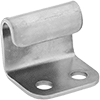Filter by
Width
End Fitting Type
Material
Color
Weight Capacity
Load Securement Type
Hook Opening Width
Export Control Classification Number (ECCN)
DFARS Specialty Metals
Fixed End Length
Buckle Material
End Fitting Material
Breaking Strength
Overall Length
Latch Type
Material Handling
Containers, Storage, and Furniture














































